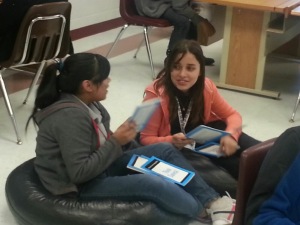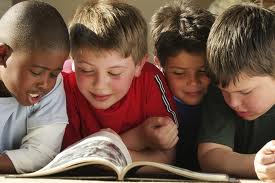This semester, students in READ 3325.20B were asked to contribute a post to this blog.
By Norma A. Salinas and Leticia Sanchez
Fighting illiteracy and fight poverty in the Rio Grande Valley go hand in hand. Unfortunately children are the ones that take the full blown impact. Illiteracy is passed on by parents to their children. When children’s parents do not encourage them to read or write at home, they struggle more when they start school. The less fortunate children are found living in colonias along the Rio Grande River. Their socioeconomic status makes life difficult for them; other more fortunate children enjoy the luxury of having books, iPads, and every other educational gadget available to them, they also have educated parents that encourage them to read, write and study at home, and this helps tremendously when you get to school.
When children are hungry or cold, they start visualizing themselves with what the most fortunate kids possess so learning does not become your first priority; your survival instinct kicks in. As my mother used to say, “You cannot learn on an empty stomach.”
 While I was doing my field hours at a local elementary school during the summer, I witnessed a Pre-Kinder student that was crying right after getting off from the bus, I asked him what the reason for his crying was and he told me that he was hungry. He thought he was not going to have breakfast because his bus got to school late and the kitchen personnel were already cleaning the area and putting everything away. I felt like someone had punched me in the stomach with such force that I felt dizzy. I went to the kitchen and asked the cooks to prepare a plate for him, after having breakfast; he seemed like the happiest kid in the planet. When your stomach is full, then you can take care of other business, but if you are on an empty stomach, food becomes your primary and only concern. Living in the most powerful country in the world and children are starving right on our border towns. The government does nothing to help these children because a large percentage of them are in this country illegally, but their stomachs do not know about legalities. Why do children have to worry about where their next meal will be coming from? Poor children often do not like to miss school because they know that they will be fed at school, but at home it’s a different story.
While I was doing my field hours at a local elementary school during the summer, I witnessed a Pre-Kinder student that was crying right after getting off from the bus, I asked him what the reason for his crying was and he told me that he was hungry. He thought he was not going to have breakfast because his bus got to school late and the kitchen personnel were already cleaning the area and putting everything away. I felt like someone had punched me in the stomach with such force that I felt dizzy. I went to the kitchen and asked the cooks to prepare a plate for him, after having breakfast; he seemed like the happiest kid in the planet. When your stomach is full, then you can take care of other business, but if you are on an empty stomach, food becomes your primary and only concern. Living in the most powerful country in the world and children are starving right on our border towns. The government does nothing to help these children because a large percentage of them are in this country illegally, but their stomachs do not know about legalities. Why do children have to worry about where their next meal will be coming from? Poor children often do not like to miss school because they know that they will be fed at school, but at home it’s a different story.
Children need to be provided the same learning opportunities that other children have access to, if children lack textbooks, dictionaries or any reading material necessary, the school districts need to provide the students with the learning tools necessary for their learning development. School counselors should have the responsibility to provide and make sure children meet their bare essentials and that they are in a good state of mind in order for them to learn. Hunger directly affects the cognitive abilities in children and this should be remediated at all cost. So before we take on a challenge to help children read, we first need to concentrate on the first priority which is; to feed the hungry and then, take the necessary steps to combat illiteracy in our young children.


